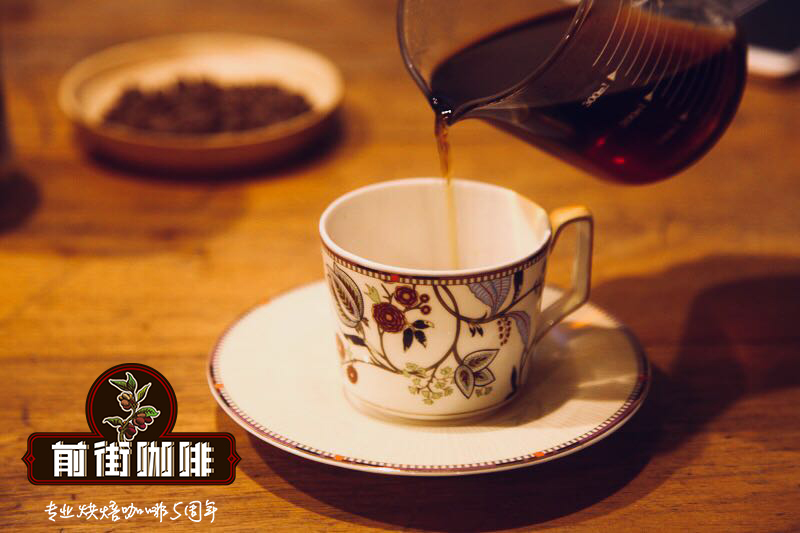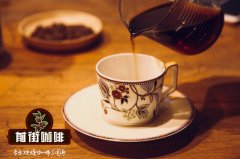How many kinds of half-sun treatments are there in Brazilian coffee beans? just read this article.

Professional coffee knowledge exchange more coffee bean information please follow the coffee workshop (Wechat official account cafe_style)
Brief introduction of Qianjie-Brazilian Coffee varieties and half-Sun treatment process
There are many varieties of coffee grown in Brazil, with red bourbon, yellow bourbon, New World and Kaduai as the main varieties. Kaddura, Akaia, Obata, Alamosa, pointed body bourbon and so on have also been planted and studied. Cambinas Agricultural Research Institute in Sao Paulo is a famous coffee variety improvement arsenal in Brazil. Katim, the most widely cultivated in the world, is the masterpiece of Portuguese and Brazilian scientists.
Brazilian coffee is relatively low in altitude compared with Central and South American countries, so the coffee flavor is low, with caramel and chocolate flavor, sweet taste is obvious, but the overall taste is light.
Since 1990, half-sun (or semi-water washing) has been advocated in Brazil, that is, after removing defects and floating fruits through a sink, peel, pulp and part of pectin are removed by machine, then washed and finally dried or dried in a drying room. Compared with the water washing method, the half-sun method saves water and labor, which has greatly improved the quality of Brazilian coffee, reversing the bad criticism of Brazilian coffee after years of rough sun exposure.
Half-sun treatment
After the coffee fruit is picked, the immature fruit and foreign body are removed through the sink, and the skin and flesh are removed, and the skin and flesh are sunburned with mucous membrane.
After the outer pulp of sun-dried coffee beans is removed, there will be a layer of sticky jelly.
Advantages: in the process of removing the peel and pulp of coffee, the fully ripe cherry pulp will be removed, and the immature coffee fruit (green or reddish green) will not be easily removed, so this treatment can filter out the immature fruit. Compared with the sun method, the maturity is more uniform; drying days will be half less than the sun; mainly used in Brazil, aimed at improving the quality of coffee
Disadvantages: the drying process is vulnerable to pollution and mildew; the whole process needs to be closely monitored and constantly turned to speed up drying so as to avoid bad fermentation smell.
Knowledge: the more colloid, the darker the color of the beans, the stronger and stronger sweetness and taste you can feel.
In short: Qianjie is a coffee research hall, happy to share the knowledge about coffee with you, we share unreservedly just to make more friends fall in love with coffee, and there will be three low-discount coffee activities every month. The reason is that Qianjie wants to make more friends drink the best coffee at the lowest price, which has been Qianjie's tenet for 6 years!
END
Important Notice :
前街咖啡 FrontStreet Coffee has moved to new addredd:
FrontStreet Coffee Address: 315,Donghua East Road,GuangZhou
Tel:020 38364473
- Prev

The main variety of Brazilian coffee beans is shrimp? Is the characteristic of half-sun treatment half-baked?
Professional coffee knowledge exchange more coffee bean information please follow the coffee workshop (Wechat official account cafe_style) front street-Brazil coffee varieties, treatment brief introduction to the wide variety of coffee grown in Brazil, with red bourbon, yellow bourbon, New World, Kaduai as the main varieties. Kaddura, Akaia, Obata, Alamosa, pointed body bourbon and so on have also been planted and studied. Bit
- Next

What are the varieties of Brazilian coffee beans? what are the characteristics of semi-washing method? why is it called half-sun method?
Professional coffee knowledge exchange more coffee bean information please follow the coffee workshop (Wechat official account cafe_style) front street-Brazilian coffee varieties, semi-washing treatment brief introduction to Brazilian coffee there are many kinds of coffee in Brazil, the vast majority of Brazilian coffee is unwashed and dried, they are classified according to the name of the country of origin and port of transport. Brazil has 21 states and 17 states produce coffee, but 4 of them
Related
- Beginners will see the "Coffee pull flower" guide!
- What is the difference between ice blog purified milk and ordinary milk coffee?
- Why is the Philippines the largest producer of crops in Liberia?
- For coffee extraction, should the fine powder be retained?
- How does extracted espresso fill pressed powder? How much strength does it take to press the powder?
- How to make jasmine cold extract coffee? Is the jasmine + latte good?
- Will this little toy really make the coffee taste better? How does Lily Drip affect coffee extraction?
- Will the action of slapping the filter cup also affect coffee extraction?
- What's the difference between powder-to-water ratio and powder-to-liquid ratio?
- What is the Ethiopian local species? What does it have to do with Heirloom native species?

